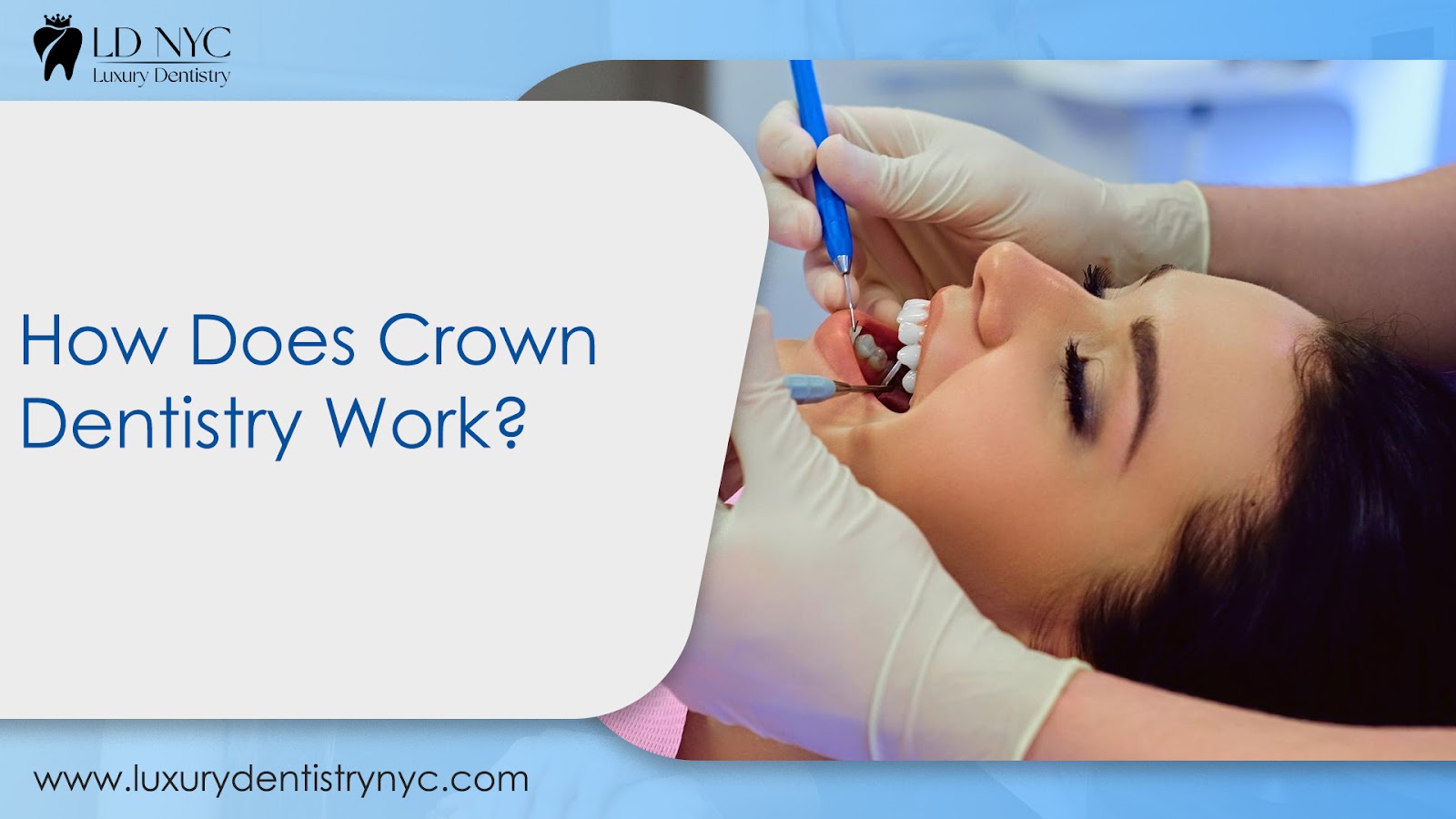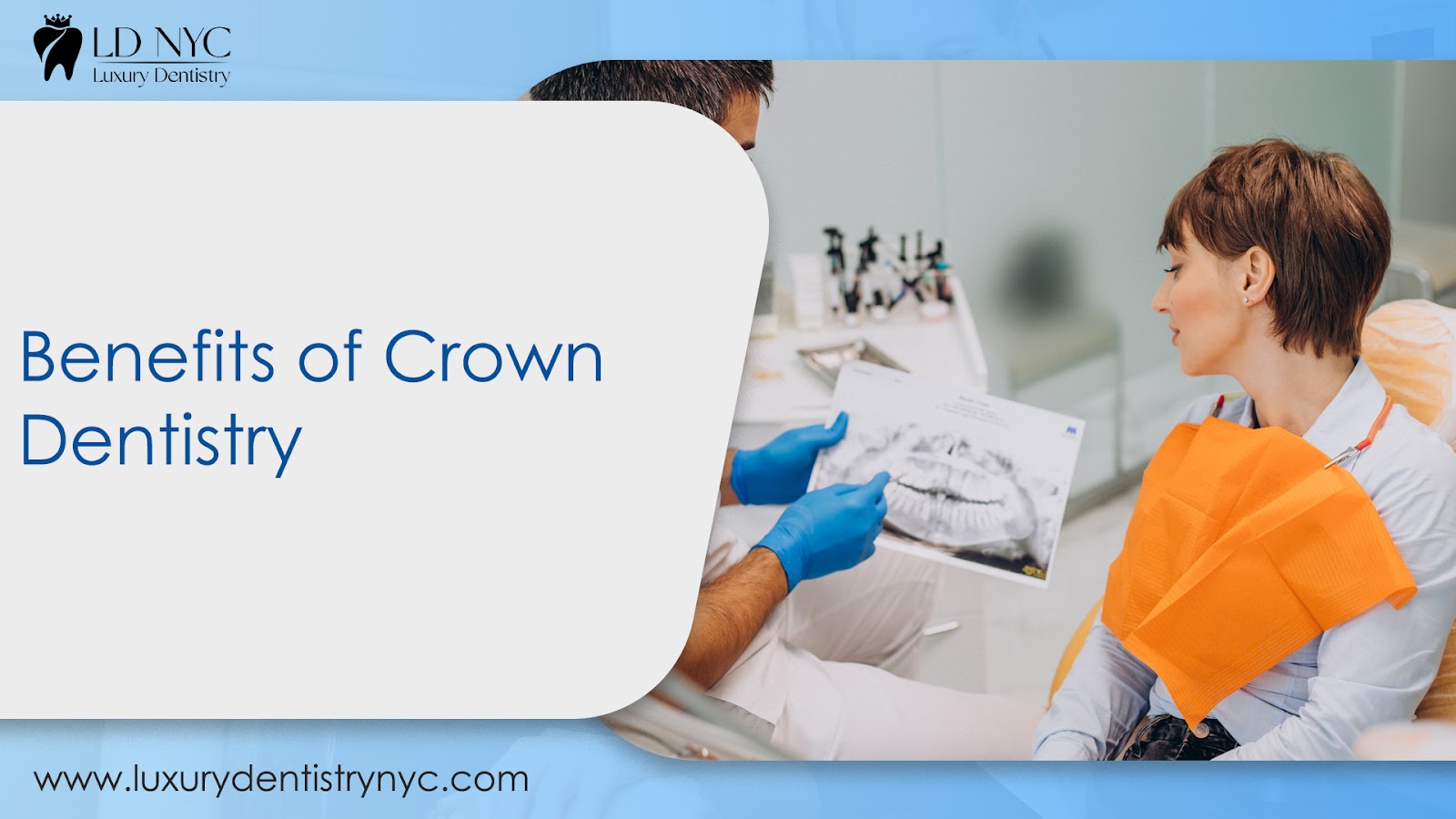A smile is worth a thousand words; it radiates warmth, joy, and positivity. However, if you are struggling with damaged or decayed teeth, you may hide your smile, feel less confident and miss out on the joys of life. Luckily, with advances in dental technology, there are several ways to save your teeth and make your smile dazzle again.
In this blog post, we will discuss crown dentistry, a popular method of tooth restoration and explore how it can save your teeth and make you smile again.
Table of Contents
Toggle What is Crown Dentistry?
What is Crown Dentistry?
Crown dentistry, also known as dental crowns or caps, is a type of dental restoration that involves covering the tooth’s damaged or decayed portion with a cap or crown. The crown is custom-made to fit perfectly over the tooth, providing protection and support. It also improves aesthetics by altering the tooth’s shape, size, and color.
The use of dental crowns can be traced back to ancient times. The Egyptians used gold to create dental crowns. On the other hand, the Romans used a mix of animal teeth, human teeth, and ivory to create their version of dental crowns. Over the years, dental technology has advanced, and today, dental crowns are made from various materials, such as porcelain, zirconia, and ceramic.
Dental crowns serve various functions, address different dental issues such as tooth decay, discoloration, and cracked or chipped teeth, and even hold a dental bridge in place.
When a tooth’s structure is compromised, a dental crown can restore its shape, size, and strength. It can also enhance the tooth’s appearance, improve its alignment, correct bite issues, and prevent further deterioration.
 How Does Crown Dentistry Work?
How Does Crown Dentistry Work?
Crown dentistry is a simple and effective treatment that involves placing a cap or crown over the damaged tooth. The crown is custom-made to fit your tooth perfectly, ensuring it blends in with your natural teeth and looks seamless.
Crowns can be made from different materials, including porcelain, ceramic, and metal, and according to your needs, your dentist will recommend the best option.
The first step in crown dentistry is to prepare the tooth. This involves removing any decayed or damaged tooth and shaping it to fit the crown. Your dentist will then take an imprint of your tooth, which will be sent to the dental lab to create your custom-made crown. In the meantime, a temporary crown will cover your tooth to protect it.
Once the custom-made crown is ready, you’ll return to the dentist for the final fitting. Your temporary crown will be taken off, and the new crown will be carefully placed over your tooth.
Your dentist will make necessary adjustments to ensure your bite is comfortable and the crown fits perfectly. Once this is complete, the crown will be cemented, and you’ll have a fully restored and functional tooth.
Different types of crowns are available, and your dentist will discuss the most suitable option for your needs. Porcelain and ceramic crowns are great options for restoring front teeth as they can be color-matched to natural teeth.
On the other hand, metal crowns are more durable and better suited for back teeth. Zirconia is another popular option that combines the durability of metal crowns with the aesthetic appeal of porcelain crowns.
 Benefits of Crown Dentistry
Benefits of Crown Dentistry
Better Aesthetics
Crown dentistry can improve the aesthetics of your smile by covering up damaged, misshapen, or discolored teeth. Crowns are made from porcelain or ceramic, which can match the color of your natural teeth. This means that crowns can provide you with a more natural-looking smile.
Improved Function
Crowns can also improve the function of your teeth. If you have a significantly damaged tooth, it may be difficult to bite or chew properly. A crown can help restore the tooth’s function and make eating and speaking easier.
Increased Strength
Crowns can also increase the strength of your teeth. Porcelain and ceramic are very strong materials, and a crown can help to protect a damaged tooth from further breakage. Additionally, if you have a tooth that is cracked or chipped, a crown can help to keep it from breaking entirely.
Reduced Sensitivity
If you have sensitive teeth, crowns can help to reduce sensitivity by protecting the exposed root surfaces of your teeth. By covering up these surfaces, crowns can help to reduce the number of stimuli that reach your nerve endings and cause pain or discomfort.
Better Oral Health Overall
Crowns can also improve oral health by protecting your teeth from further damage. When a tooth is damaged, it is more susceptible to bacteria and decay. Covering the damaged tooth with a crown can help prevent further damage and keep your mouth healthy.
Increased Durability
Crowns are also much more durable than other types of dental restoration, such as fillings or veneers. With proper maintenance, crowns can last many years without needing replacement.
Conclusion
If you have a damaged or decayed tooth, crown dentistry might be a great option. It’s a safe, effective, and durable way to restore your tooth’s function and appearance. Talk to your dentist to see if crown dentistry is right for you. Remember, caring for your teeth is essential to maintaining good oral health and confidence.
Contact us today to learn more about crown dentistry or schedule a consultation.
FAQs
What are dental crowns, and why might I need them?
Crown teeth are caps placed over a damaged tooth to restore shape, size, and function. A crown covers a tooth weakened by decay, cracks, chips, or trauma.
It can also replace a missing tooth as an abutment for a bridge or dental implant. Your dentist might recommend a crown if a filling, inlay, or onlay isn’t enough to repair the damage.
What types of dental crowns are available, and which one is best for me?
Dental crowns can be created from various materials, including metal alloys, porcelain fused to metal (PFM), all-ceramic, and zirconia. Each type has pros and cons regarding strength, aesthetics, durability, cost, and suitability for different cases.
Discussing your options with your dentist and considering your preferences and needs when choosing a crown type is essential.
How is a dental crown placed, and how long does it take?
The crown placement procedure typically takes two visits to the dental office. For the first appointment, your dentist will prepare the tooth, take digital impressions, and place a temporary crown.
The impressions will be sent to a dental laboratory that custom-makes your permanent crown. In the second visit, your dentist will remove the temporary crown and cement the final crown onto your tooth. The entire process usually takes two to three weeks, depending on the type of crown chosen.
Are dental crowns painful, and how do I care for them?
Dental crowns are often necessary to protect and strengthen teeth that have suffered damage or decay. While getting a crown may seem intimidating, it’s important to note that the procedure itself is not typically painful.
However, some patients may experience sensitivity or discomfort in the days following the placement of a crown. Maintaining great oral hygiene habits is important to care for your dental crown.
It’s also a good idea to see your dentist frequently for check-ups and cleanings to ensure the health and longevity of your teeth and crowns.
How much do dental crowns cost, and does insurance cover them?
The cost of dental crowns depends on several factors, such as the crown type, the case’s complexity, and your location. Generally, metal crowns are the cheapest, followed by PFM and all-ceramic crowns, with zirconia crowns being the most expensive.
The average dental crown cost in the US ranges from $800 to $1,500 per tooth. However, depending on your plan’s coverage and deductible, your dental insurance might cover some of the cost. You should check with your insurance provider before treatment to avoid surprises.

Dr. Steven Davidowitz, also known as “Dr. D” by his patients, is one of the Upper East Side of NYC Manhattan’s leading cosmetic dentists that specialize in designing and maintaining beautiful smiles.


 What is Crown Dentistry?
What is Crown Dentistry? How Does Crown Dentistry Work?
How Does Crown Dentistry Work? Benefits of Crown Dentistry
Benefits of Crown Dentistry








